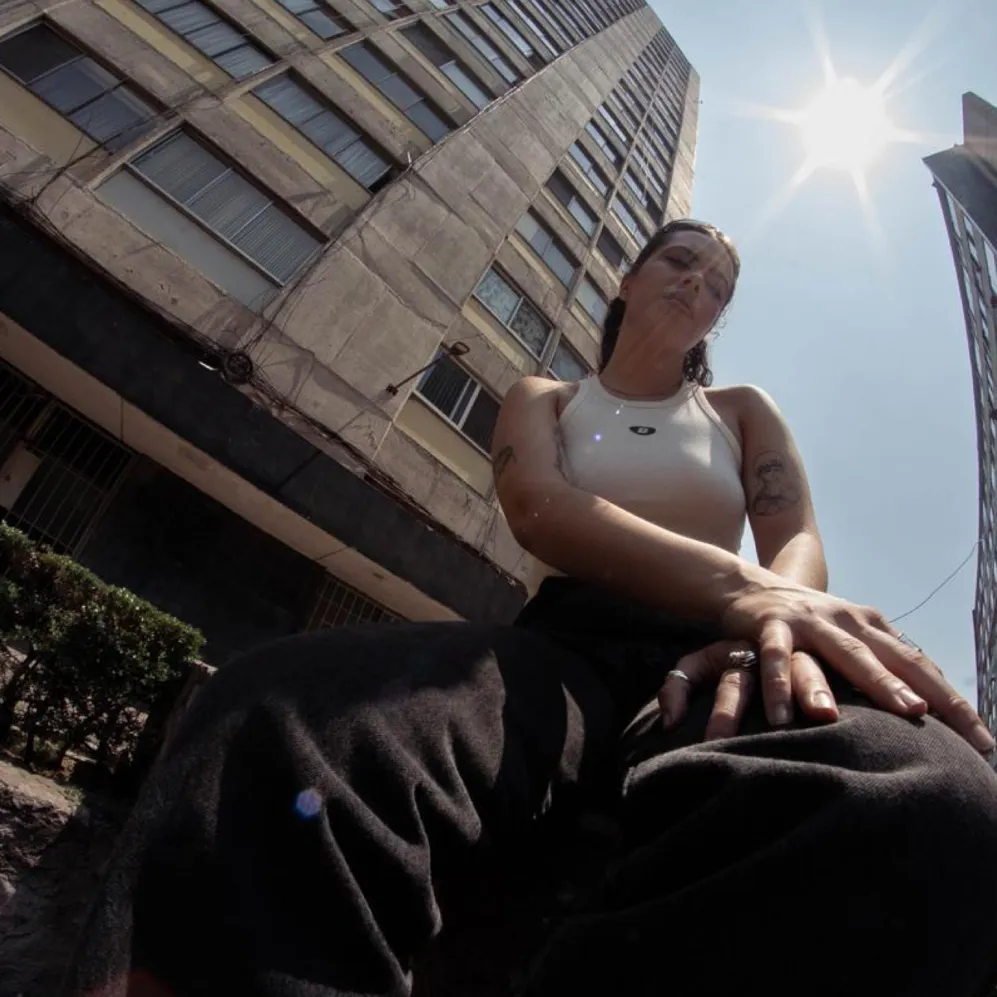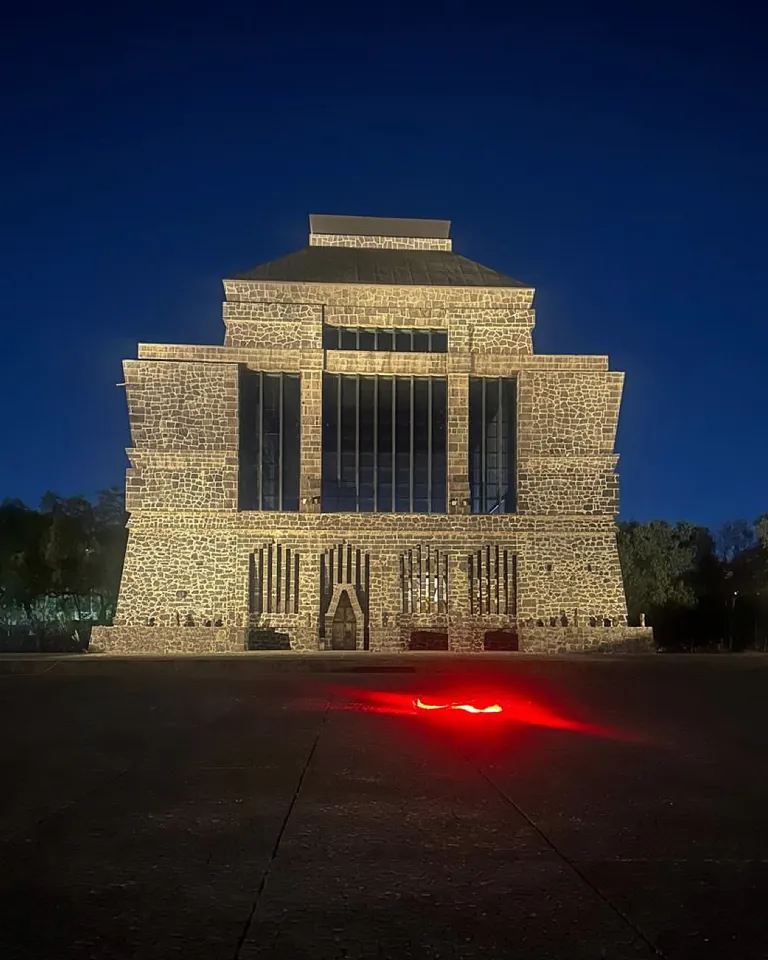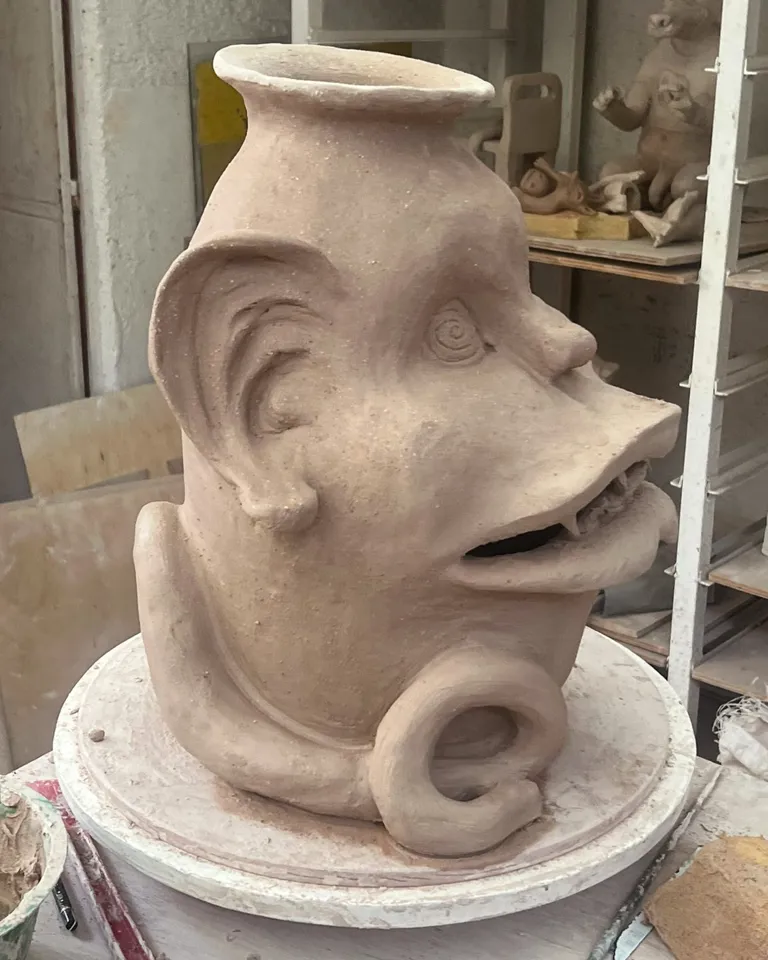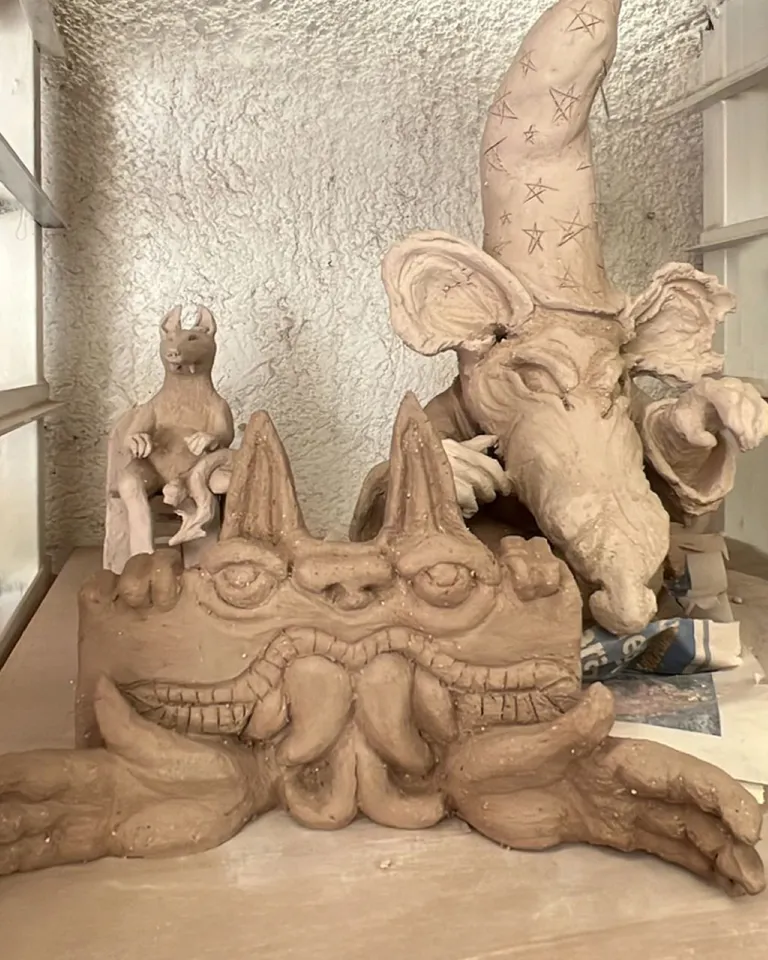
Photo: Courtesy of Paloma Contreras Lomas. Photographer: Alejandro Marcial.
Words Steph WadeDate 31 January 2025
The show explores themes of death, immortality, and mythology. Inspired by the museum’s eerie atmosphere and Rivera’s vision for it as a mausoleum for pre-Hispanic objects, the artists will transform parts of the space into a type of “fictional thriller.” Using all-new video, sound interventions, sculptures, and paintings that take over the museum’s rooms and hallways, their work straddles both ancient and futuristic ideas to create a place where death and immortality converge. Ahead of the exhibition launch at Mexico City Art week, we catch up with Paloma Contreras Lomas to find out more.

Photo: Courtesy of Paloma Contreras Lomas. Photograph by Karla Niño de Rivera.

Photo: Courtesy of Museo Anahuacalli. Design by @wood_darkness.
We both work in mixed media, but we have different subject matter. Carolina creates speculative works about reviving life through technology, while I’m interested in Baroqueness, fiction, and creating things with many layers, for example, a work that appears soft or fuzzy but has darker meanings.
Anacuahalli is my favorite museum. We wanted to create work that explores the myth and promise of modernity, particularly in the context of Mexican and Latin American history. It’s difficult to compete with the museum, its layers, and Rivera’s work, but we wanted to create our own “imaginarium” that questions the impact of modernity. To me, the idea of modernity is fiction itself; so it’s interesting to question this inside such a monument with so much history; a place that held so much promise when it was first conceived.

Photo: Courtesy of Paloma Contreras Lomas.

Photo: Courtesy of Paloma Contreras Lomas.
Paloma Contreras Lomas
We’ve created our own science fiction thriller. You can expect big installations, video, large drawings, and paintings. We want the audience to have a “horror house” experience. The drawings I’m creating are full of symbology and Baroqueness, which reflects the museum’s own Baroqueness. Mexican Baroque is its own influential movement here.
We’re referring to the south of the city, where the museum is located, not the Global South. Anahuacalli is like a huge temple, and when Diego Rivera designed it, he intended to be buried there with his wife, Frida Kahlo. That didn’t happen of course, and instead, thousands of pre-Hispanic figures and artifacts rest there. Rivera also planned for Mexico City to be a utopian city, which also didn’t happen. So with this in mind, we wanted to look at how death works in this specific part of the city. Being in the museum is like its own paranormal experience with ghosts and creatures.

Photo: Courtesy of Paloma Contreras Lomas.

When I say paranormal, it has to do with the spectrums of Hispanic pieces, of modernity, and even political and social spectrums. I’ve been thinking a lot about the complexity of our current political climate, its impact on contemporary art, and how the art world functions. I don’t think of myself as an authority to change things, but certainly making art in general can serve as an identifier of what's happening around the world. And how can we understand what is happening right now as anything other than paranormal?
It’s my first time exhibiting at a large institution, and this week is one of Latin America's biggest art fairs so I’m very excited about this. The week itself is very fun, lots of parties!